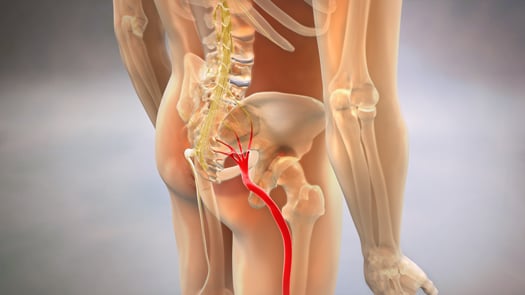
Sciatica is a painful condition that affects the sciatic nerve, which runs from the lower back down to the legs. It is a common problem that affects millions of people worldwide, and it can be caused by a range of issues, including a herniated disc, spinal stenosis, or even muscle imbalances.
For those who suffer from sciatica, finding a permanent fix for the condition is a top priority. There are a variety of treatments available, including physical therapy, medication, and surgery, but many people wonder if there is a way to permanently alleviate the pain. This article explores some of the most effective ways to manage sciatica pain and discusses whether there is a permanent fix for the condition.
Causes of Sciatica
To understand if there is a permanent fix for sciatica, it is essential to first examine the causes of the condition. Sciatica can be caused by various factors, including:
- A herniated or “bulging disc” – The discs in your spine act as shock absorbers and are made of a jelly-like material surrounded by a tough outer layer. When the outer layer of the disc tears or ruptures, this jelly-like material can press against the sciatic nerve, causing pain and discomfort.
- Spinal stenosis – This condition occurs when the spinal canal narrows, putting pressure on the nerves that travel through the spinal cord.
- Degenerative disc disease – With age, the discs in the spine lose their flexibility and cushioning ability. This can lead to nerve compression and sciatica.
- Piriformis syndrome – The piriformis muscle is located deep in the buttock. When it becomes tight or spasms, it can irritate the sciatic nerve, leading to pain.
- Spinal tumors – In rare cases, a tumor can grow on the spine and compress the sciatic nerve, causing pain.
While the causes of sciatica can vary, the symptoms are often similar. Pain, numbness, tingling, and weakness are common symptoms of sciatica. In severe cases, it can even cause difficulty walking or standing.
Conservative Forms of Treatment
For many people, conservative treatment options are enough to alleviate the pain and discomfort associated with sciatica. Some of the most common conservative forms of treatment include:
- Physical therapy – Physical therapy can strengthen the muscles that support the spine and improve overall posture. A physical therapist can also teach you exercises and stretches to alleviate sciatica pain.
- Medication – Over-the-counter pain medication such as ibuprofen or acetaminophen can alleviate pain associated with sciatica. In more severe cases, prescription medication may be necessary.
- Heat and ice therapy – Applying heat or ice to the affected area may reduce inflammation and alleviate pain. Try alternating between heat and ice therapy for 20 minutes at a time.
- Epidural steroid injections – If conservative treatment options fail to alleviate pain, a doctor may recommend an epidural steroid injection. This involves injecting a steroid directly into the spinal canal to reduce inflammation and alleviate pain.
Surgery
In some cases, surgery may be recommended to relieve sciatica. Surgery is typically recommended when conservative treatment options have failed or when the condition is causing severe pain, loss of mobility, or other serious complications. Some common surgical options for sciatica include:
- Discectomy or microdiscectomy – This surgery is performed to remove the portion of the herniated or bulging disc that is compressing the sciatic nerve.
- Laminectomy – A laminectomy involves removing the lamina, a bony structure that covers the spinal canal, to relieve pressure on the sciatic nerve.
- Spinal fusion – In some cases, spinal fusion may be necessary to stabilize the spine and relieve pressure on the sciatic nerve.
- Foraminotomy – This surgical procedure involves enlarging the space around the nerve roots to alleviate pressure on the sciatic nerve.
Patients who have had discectomies for herniated discs may experience sciatica if their discs reherniate, which often occurs if there is a large hole in the outer ring of the disc after surgery. Fortunately, there is a new treatment available. Barricaid is a device shown to reduce the risk of reherniation by closing the hole in the disc after a discectomy, and 95 percent of Barricaid patients did not undergo a reoperation due to reherniation in a 2-year study timeframe. This treatment is done immediately following the discectomy—during the same operation—and does not require any additional incisions or time in the hospital.
To learn more about the Barricaid treatment, ask your doctor or contact us at 844-288-7474.
For full benefit/risk information, please visit: https://www.barricaid.com/instructions.


Comments